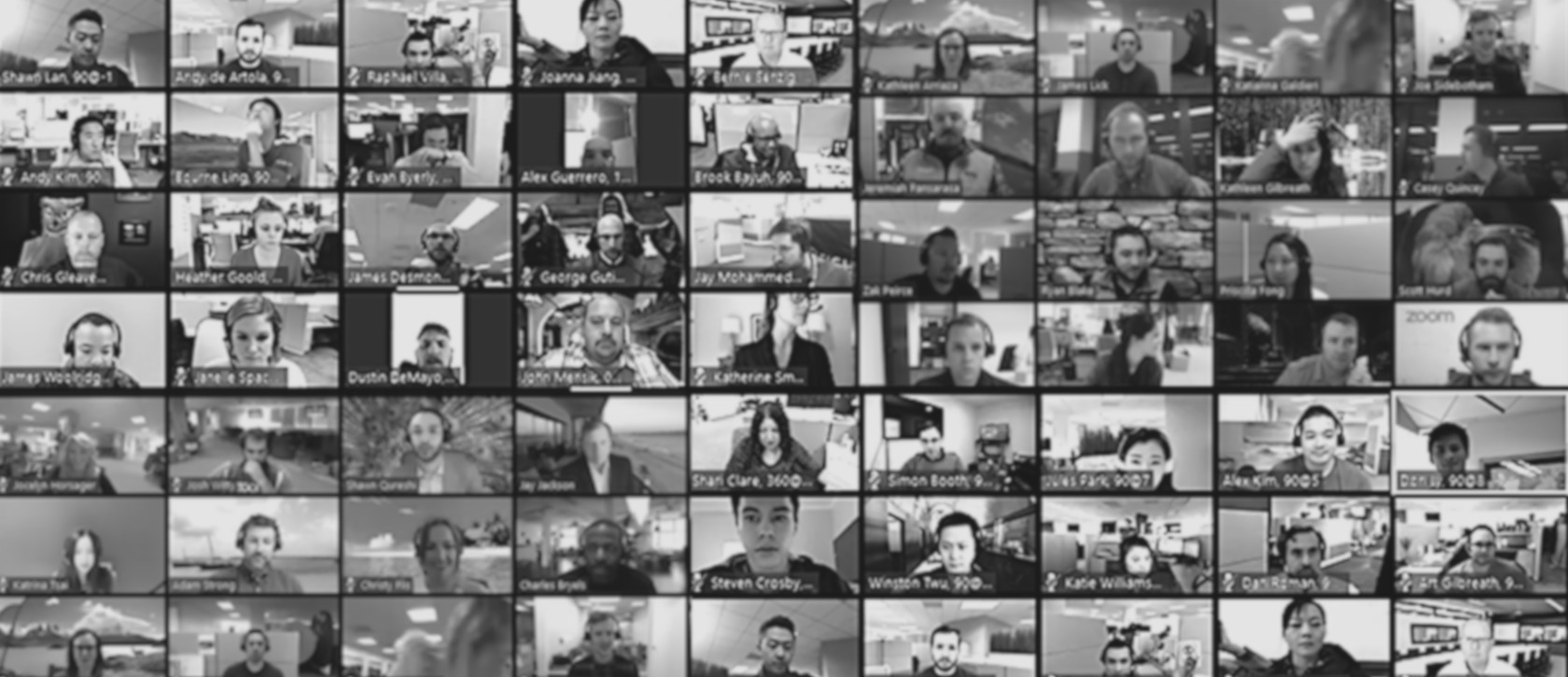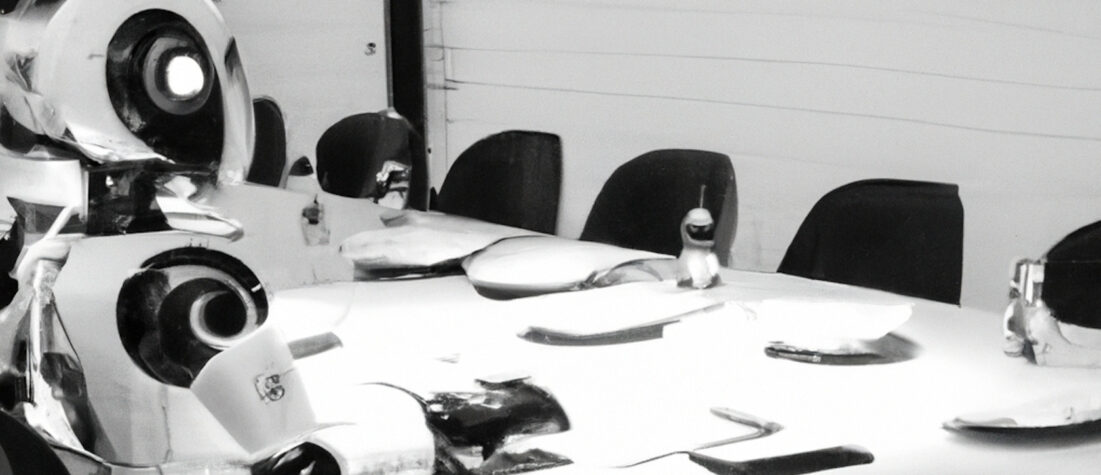
Explora Articles Exhausted from so many Zooms?
March 2, 2021 9 min
Exhausted from so many Zooms?
In the past year, many people have seen their working days turn into a grueling succession of video calls. Here are the causes of the Zoom fatigue many of us suffer from, and what we can do to avoid it.


Zoom Video Communications, Inc. (Zoom) is a common name on the lists of companies that have benefited from the Covid crisis. The stock price of this Californian company founded in 2011 rose 635% during 2020, reaching in October last year a market capitalization of 140 billion dollars, exceeding the market value of large historical corporations such as ExxonMobil.
Many of us find the succession of videoconferences our working days have become exhausting.
This spectacular growth is a direct consequence of the change in habits the pandemic has forced us. In the last year, many of us have changed the way we work and the channels through which we communicate with friends and family. We make more video calls than ever. Of course, this new way of communicating has advantages. For example, because we do not have to travel to meet our interlocutors, we can talk to more people within a day. But it also has its drawbacks. Among others, many of us find the succession of videoconferences our working days have become exhausting. An effect media has baptized as the “Zoom Fatigue.”
In April 2020, when we had barely been in confinement for a month, BBC Worklife had an interview on this topic with Gianpiero Petriglieri, an associate professor at Insead, and Marissa Shuffler, an associate professor at Clemson University in South Carolina.
Among the causes of this “video call fatigue” (a phenomenon that was just in its infancy at that time), Petriglieri pointed out the higher concentration video calls require compared to face-to-face conversations. In this new type of communication, we need to pay more attention to detect non-verbal signals such as facial expressions, tone of voice, and body language. We cannot relax as in a face-to-face conversation, and this ends up being exhausting. Silence is another challenge, Petriglieri argued. In a face-to-face chat, silences create a natural rhythm, but in a video call, silence often produces an uncomfortable emptiness we try to avoid at all costs.
For her part, Professor Shuffler highlighted another difference between video calls and face-to-face conversations that also causes fatigue. Unlike a face-to-face conversation, in a video conference, Shuffler said, we know that everyone is watching us, we feel social pressure, we need to act. Besides, when we participate in a video call, it is difficult to avoid looking at our face on the screen and not pay attention to how we behave in front of the camera, something we tend to forget in a face-to-face conversation.
One year after the onset of the pandemic, Jeremy Bailenson, professor of communication and founder of the Virtual Human Interaction Laboratory at Stanford University, has published in the journal Technology, Mind, and Behavior an article exploring the causes of Zoom fatigue. This piece, Stanford University tags as the “first peer-reviewed article that systematically deconstructs Zoom’s fatigue from a psychological perspective,” comes together with a study that uses a scale of “Zoom exhaustion and fatigue” to measure the impact of this new communication channel on its users. The results of this study, whose reading I recommend even if it has not yet been peer-reviewed, suggest, for example, that women are more affected than men when watching videos of themselves same all day.
Back to the article, Bailenson identifies four possible explanations for “Zoom fatigue”:
First of all, video conferencing makes us look at other people closely and directly in the eyes much longer than is usual in our face-to-face interactions. In other words, a behavior usually reserved for very close relationships has become the way we look at our co-workers or even people we have not talked to before.
Second, non-verbal communication does not flow naturally in a video call. In our face-to-face conversations, we rarely pay attention to our gestures and other non-verbal signals we emit. But it is different when videoconferencing. The good thing is that we do not need to worry about things like the movements of our legs (or even how we dress from the waist down) that are out of sight of the camera. But still, as we transmit fewer signals of non-verbal communication, those signals have a higher impact on our interlocutors, and we must pay more attention to them.
Third, one challenge Professor Shuffler already mentioned in that interview for the BBC: how difficult it is in a video call not to look at our face and not notice how we are behaving in front of the camera. This constant self-evaluation can lead to more prosocial behavior, but it can also be very stressful. Bailenson uses a very graphic simile to explain that. Let’s imagine that, in our physical workplace, throughout our entire working day, a person with a mirror accompanies us, and this person makes sure we see our face in that mirror in every task we do and every conversation we have. Let’s imagine how we would feel at the end of the day.
Fourth, Bailenson points out the limitations to physical mobility video calls impose on us. During face-to-face meetings, people move. They walk, stand and stretch, approach another person in the room to discuss something in private, get up to use a whiteboard, get a drink, go to the bathroom. Several studies show that moving causes better performance in meetings. However, this is not the case in video conferencing. We remain seated in front of our screen, taking care not to get out of the camera.
The good news is that many of the causes of “Zoom fatigue” are workable.
The good news is that many of the causes of “Zoom fatigue” are workable. In their interview with the BBC, Professors Petriglieri and Shuffler gave us some ideas. They said that turning on the camera should be optional or, at least, people should understand that cameras do not have to be on all the time during each meeting. They also recommended us to place our computer on one side, instead of having it in front of us, to avoid, in group conferences, that exhausting feeling that the whole group is looking directly at us.
Bailenson, for his part, also recommends us to make “audio-only” the default option for most video conferences. But besides, he gives us (and to Zoom) other ideas, such as that the “selfie” window in which we see our face disappears automatically after the first few seconds of the teleconference once we have verified our framing is correct. Or the possibility of reducing the windows where we see the faces of the people we are talking to, so we do not feel them so close. Or using an external webcam or keyboard, thanks to which we can sit further away from our computer.
In any case, if I had to stick with just one of the recommendations Bailenson gives in his article, I would pick his suggestion of, before making a video conference, thinking if we could not solve the problem with a simple phone call.
Did you like it?
Future for Work Institute operates on an annual subscription model that includes access to our calendar activities and knowledge repository resources, as well as in-company services.
Plan
Curiosity
Recommended for HR teams of between 5 and 20 people.
Plan
Pioneer
Recommended for HR teams of between 15 and 100 people.
Plan
Exploration
Recommended for HR teams of more than 100 people.
Plan
Horizons
For more complex organizations.
Already Registered? Log in here






